Going out of exist number 1 at Sendagi Station on Chiyoda-Line, we can find out “Dango-Sakashita” at the intersection of Shinobazu-Street on the left side. And further proceeding on the willow-planted street from the intersection toward the Yanaka Cemetery, we can get to a gentle ascend of a slop called “Sansaki-Ska” Slant creeping up Sinobu Hill.
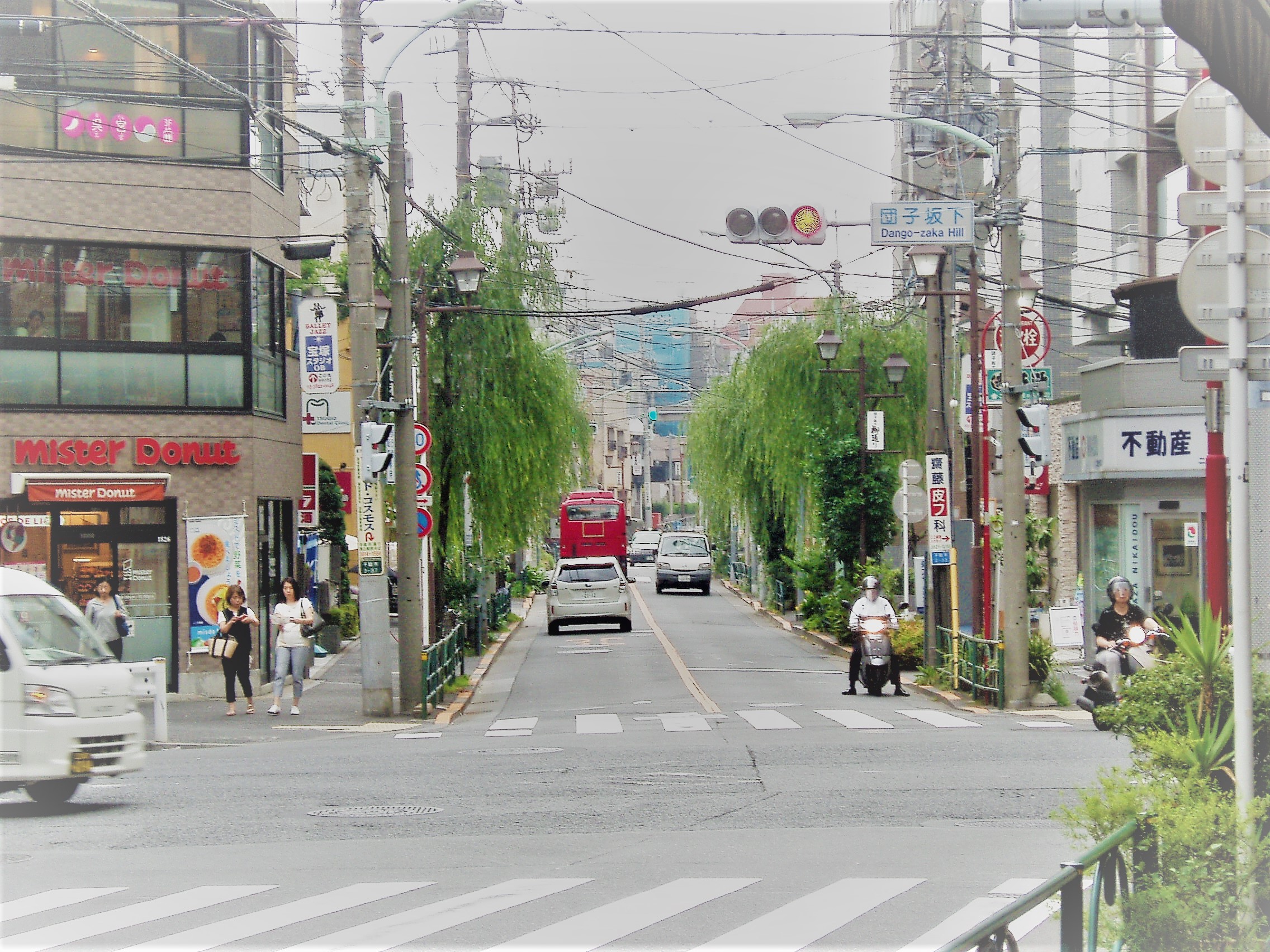
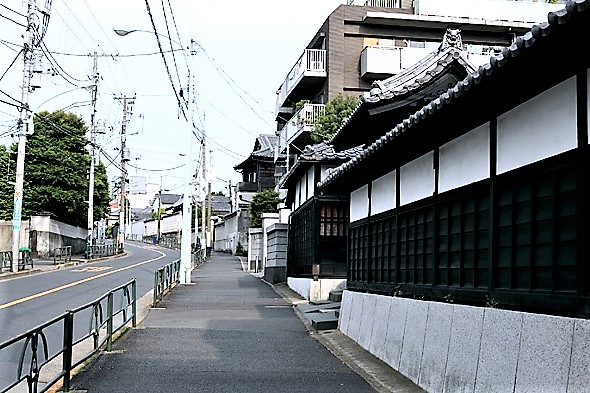
There are 9 numbers of temples densely lined up along the slant within approx. 500 meters length. People who are going up and down the slope, would look at the right or left to see the temples. For this reason neighbors call the slant “neck- swinging slant” or “Kubifuri-Saka” in Japanese. This area used to be a fierce battle field of Ueno war (One of Boshin civil war) at the end of Edo period about 150 years ago.
There is a small crossing named “Biwa-Bashi” or loquat bridge at the foot of Sansaki-Saka Slant. Once a river called Aizome-Gawa (literary means Indigo river) flowed under the bridge across Sansaki-Saka Slant. The Aizome river traveled through Simizu valley upto Shinobazu Pond in Ueno area. The river presently flows through an underground culvert over which Yomise alley runs from the north to the Biwa bridge and then a winding alley called Hebi-Michi (Snake alley), follows to the south. There used to be several workshops of Indigo dying by the sides of the Aizome River. It is said that the surface of the river was once colored in Indigo blue.
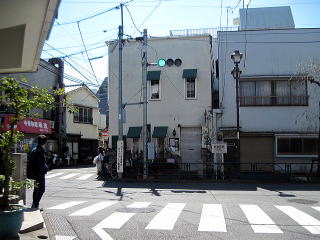
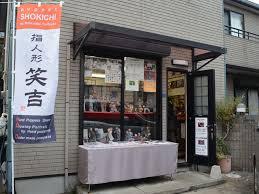
Shoukich-Yubi-Ningyou
Turning to the left at the crossing and walk ahead for 10 meters on Yomise alley,we can get to a small path branched off to the right and can find a work-shop of hand puppet called “Shokichi-Yubi- Ningyou” at the end of the path way.The show room of the workshop is small enough to barely accommodate 10 persons.A lot of puppet dolls created by them are being exhibited closely in the room.Every puppet has a different facial expression which is worked out in a unique way to show the different character & mood. The puppet’s body is made of modeling clay, consisting of bounded stone powder and it is colored by acrylic paint.Its cloth is suitably chosen based on its character, profession and age. The owner of the workshop explained about the sensibility in forming an outline of puppet’s face. In the process of forming clay an unexpected facial expression is worked out by finger touching force and its contact angle onto the clay every time.He said that this is his real charm of creating puppet dolls. A facial expression of doll would usually show its emotions such as happiness, anger, grief, contentment and others. However, most of the puppets created by them are smiling or laughing.Their smiles and laughter are not fake ones but playful and genuine. This is why they named their puppet doll “Shokichi” which means that laughing and smiling bring people happiness and prosperity. In fact, the wild farcical exuberance of the dolls lets us smile and laugh, and it really soothes us.
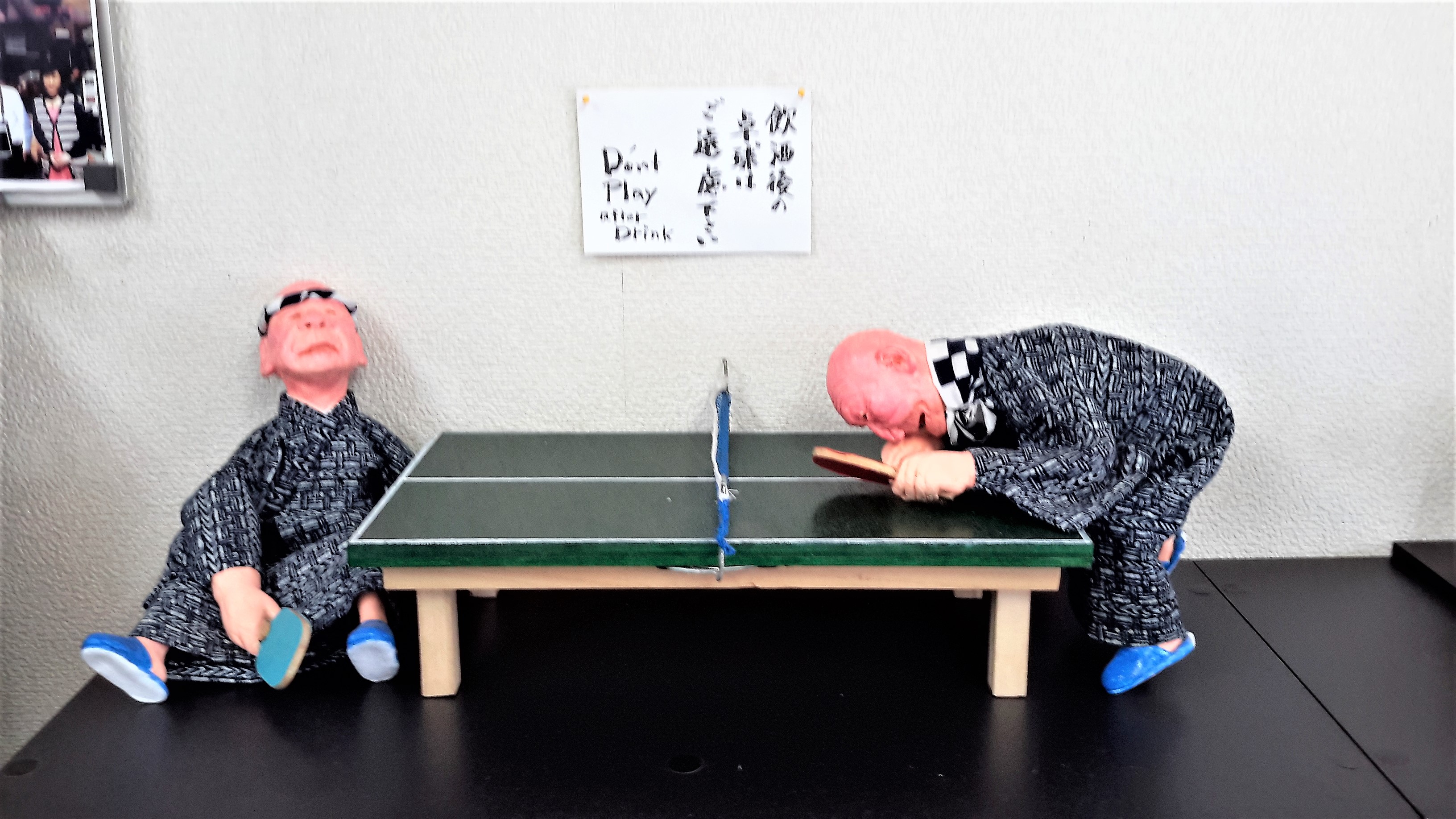
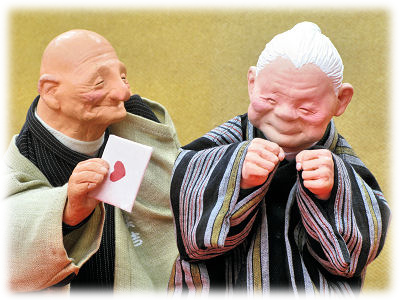
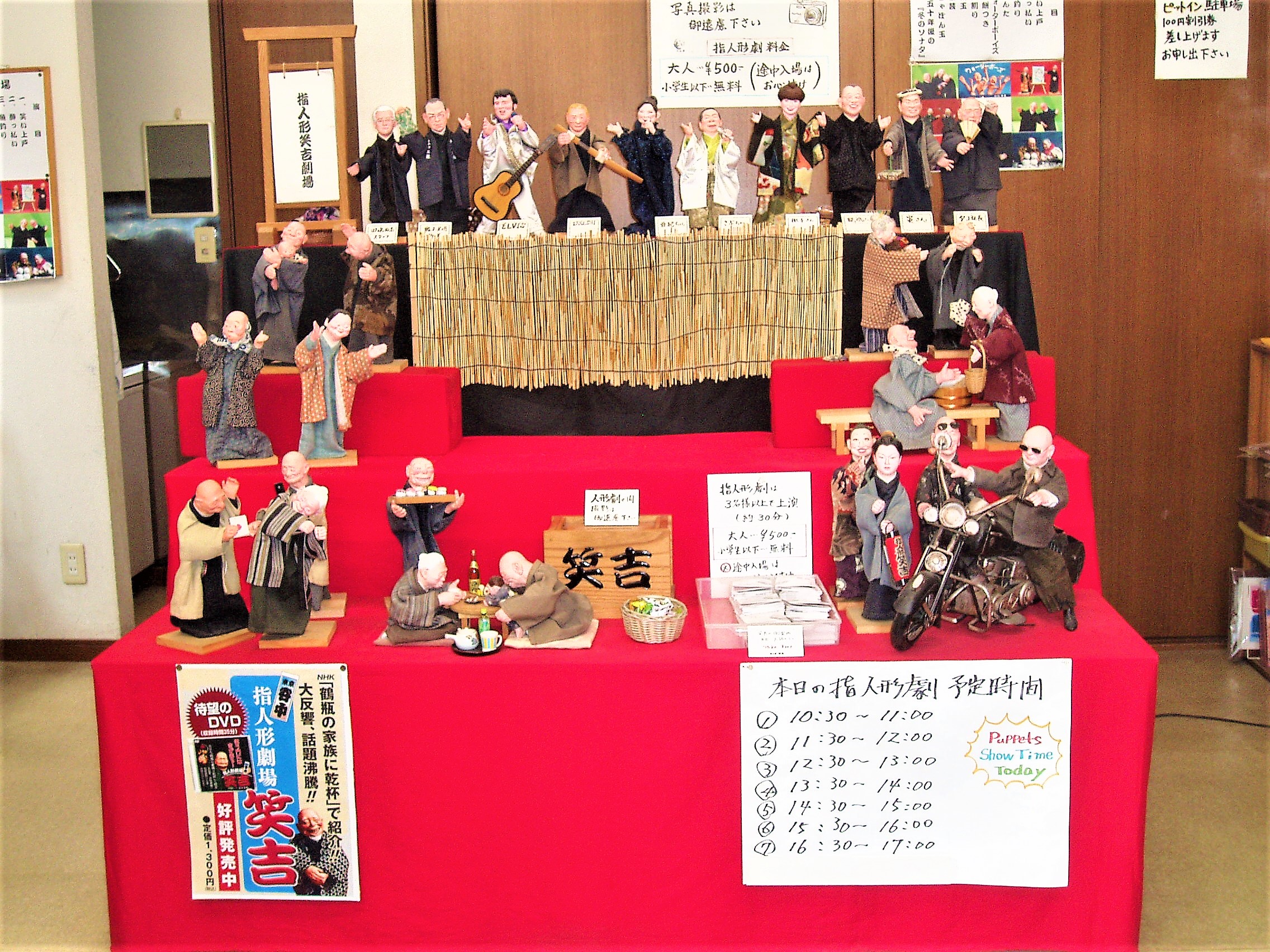
They play a hand puppet in their show room every day if the audience gather more than 2. The admission fee is 500 in Jp. Yen per person. It is carried out in the center of 3-tiered stand being spread with red carpet. The puppets are operated by a puppeteer, owner of this work shop, behind a bamboo blind.
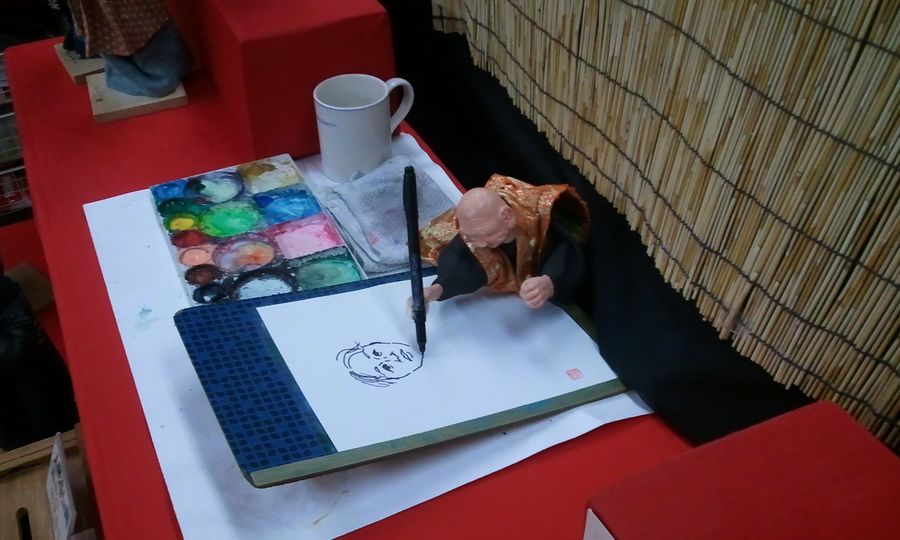
They conduct skits 7 times every day, each for 30 minutes. We can enjoy 10 repertories of comical performances. Those are respectively titled “a great laughter”, “a drunkard”, “fishing”, ”Pianist”, “My sweetheart”, “Water boys”, “Roof-tile breaker”, “Cup and ball(Japanese bilboquet)”, “Acrobat” and ” Winter Sonata” after 50 years (Parody of Korean TV drama). Most of them are comically played with featuring farcical, funny, sobbing behaviors observed in a daily life of ordinary people.Since those plays are performed in the style of pantomime with pop music, foreign visitors can also understand and enjoy them.If you request them, the puppet doll acrobatically draw your portrait just after the show for 1,000 in Jp. Yen. Its humorous and cartoonish actions might provoke you into a great laughter and you might be amazed by exquisite skilled operations which are made by puppeteer behind the bamboo blind.
In addition, they are able to create your likeness of puppet doll based on your photographs. It is produced to order and it costs about 40,000 in Jp. Yen. It will take 2-3 months to deliver it to you. The Shokichi puppet doll is so much different from the other Japanese dolls which have beautiful and sophisticated looking. It is a natural and rustic puppet dollwhich is well featuring individual characteristic. It shows us warm and cute facial expression.
The owner of this workshop would rather choose the aged than the younger as a motif of creating puppet doll since a facial expression of the aged presents cute humane and affectionate features. This might recall two witticisms to our mind. President Lincoln said that every-man-over forty is responsible for his face. And
Japanese journalist Soichi Ooya said that Male’s face shows his life history and female’s presents a bill.
Hand puppet workshop “Shokichi-Yubi-Ningyou”
Address: 3 Chome-2-6 Yanaka, Taitō-ku, Tōkyō-to
Business hour: 10:00 to 18:00
Holiday: Monday & Tuesday
Isetatsu
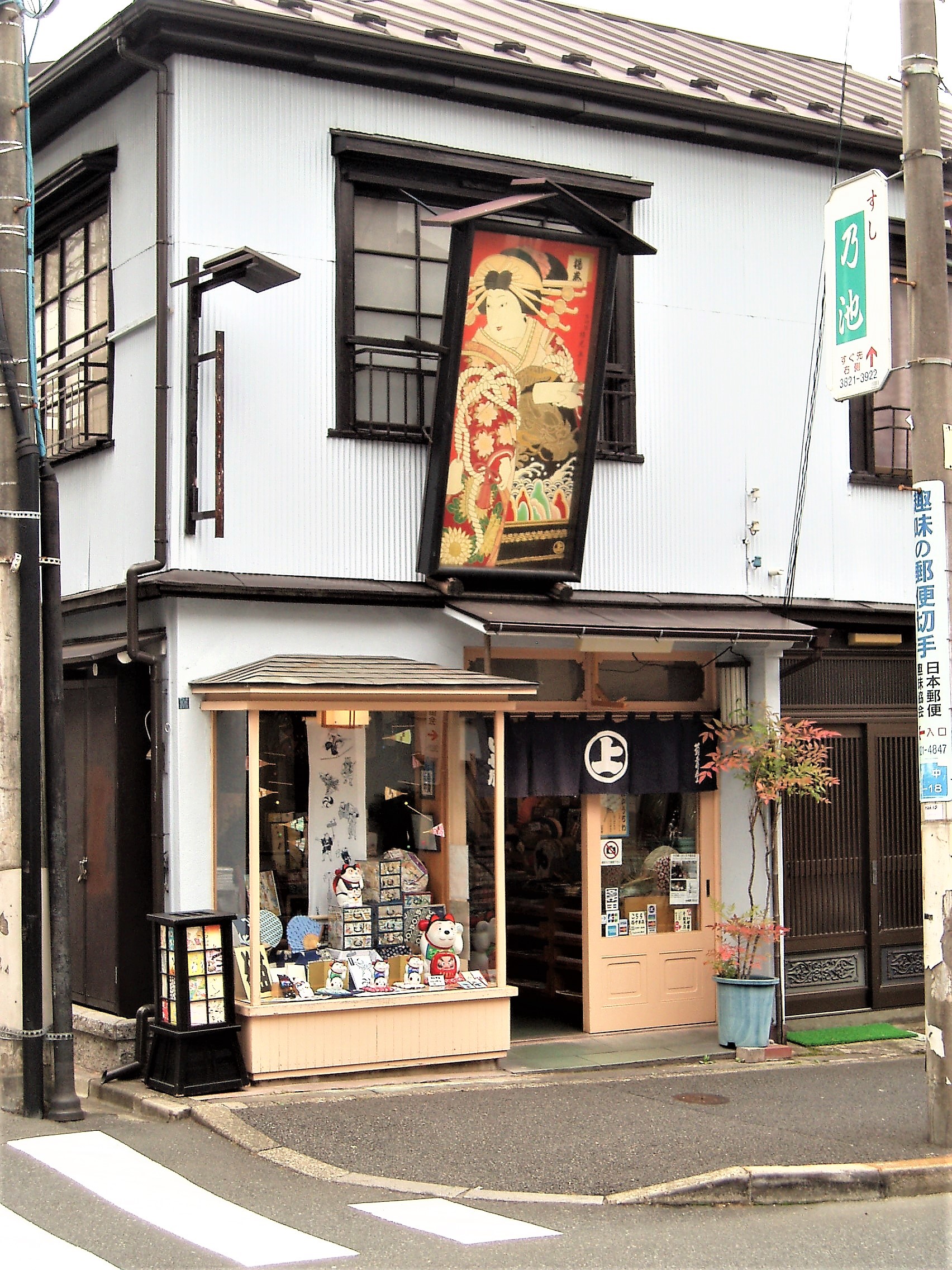
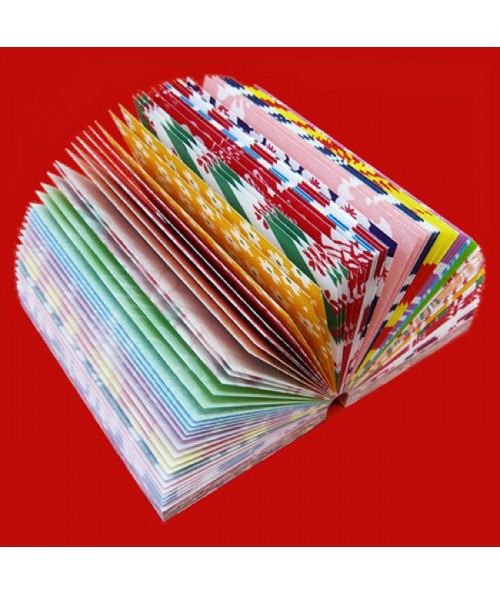
Returning to the street of Sansaki-Ska Slope and then proceeding 50 M ahead, you will find a shop on the right side of the street, of which show-window is decorated with colorful papercrafts and chiyogami-papers. The shop is called “Isetatsu” which is a long-established store with the history of more than 150 years at the end of Edo period.
They started their operation as a manufacturer of a colored woodblock print (Colored toy picture) and chiyogami-paper for children at Iwai-Cho (current Iwamoto-Cho) in Edo City in 1864. Chiyogami was originally a handmade dyed washi-paper on which decorative patterns are printed with woodcut.In old times it had been used by court poets to write “Tanka Poem” (thirty-one syllabled verse) on it. And later on it spread over to feudal lords and then to merchants as townsmen culture flourished in Edo period. Chiyogami was utilized for materials of playing goods such as paper dolls, fancy boxes, accessories, coasters and also for wrapping papers. It colored the townsmen life.
A toy picture was a multi-colored wood block print. It was developed against the backdrop of the improvement of the polychromatic printing technique. The toy picture falls into same category of Nishiki-E and Ukiyo-E.
The motif being designed on Chiyogami-paper is Japanese traditional patterns of flora-fauna, utensil-armament and nature, such as cherry flower, pine tree, plum blossoms, chrysanthemum, autumnal tints, flax-leaf, arch, arrow, ladle, reticular pattern, mesh pattern, flowing water, wave, cloud, mist, turtle, frog, plover, crane,
personified cat, monkey, dog, rabbit and etc. There are infinite variety of patterns. Olympic Games to be held in Tokyo in 2020, has applied the traditional Japanese plaid pattern named “Ichimatsu-Moyou” in Japanese as its logo mark.
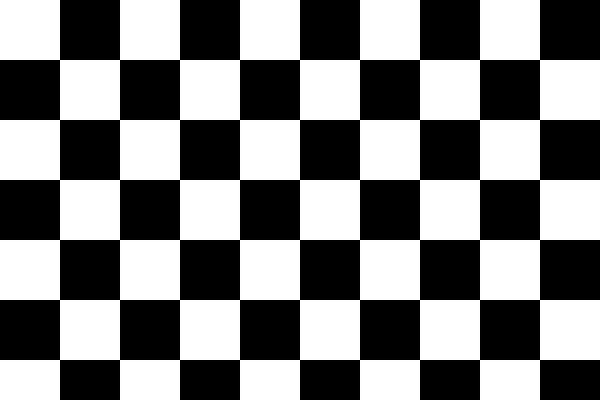
The Chiyogami is originally traditional handmade Washi-paper although it is now produced by a papermaking machine and printing machine. The Washi-paper is currently classified into a precious art work.In Edo Period the traditional Chiyogami and Toy picture were produced in joint work execution method among a publisher, a painter, a caver and a printer. The publisher was the owner of wood block and financed the business. He integrated the whole processes of the production and distributed the works. Sometimes he deeply engaged in designing. Now Isetatsu is dealing both handmade goods and machine-made. They are selling Ukiyo-E and papercrafts such as Noshi-envelopes, paper folding fans, dolls, fancy boxes, coasters which are made of costlier washi-paper or machine-made paper. As to the way of coloring, they offer both the hand-dyed and dyed by printing machine Now Isetatsu is dealing both handmade goods and machine-made. They are selling Ukiyo-E and papercrafts such as Noshi-envelopes, paper folding fans, dolls, fancy boxes, coasters which are made of costlier washi-paper or machine-made paper. As to the way of coloring, they offer the hand-dyed and dyed by printing machine.
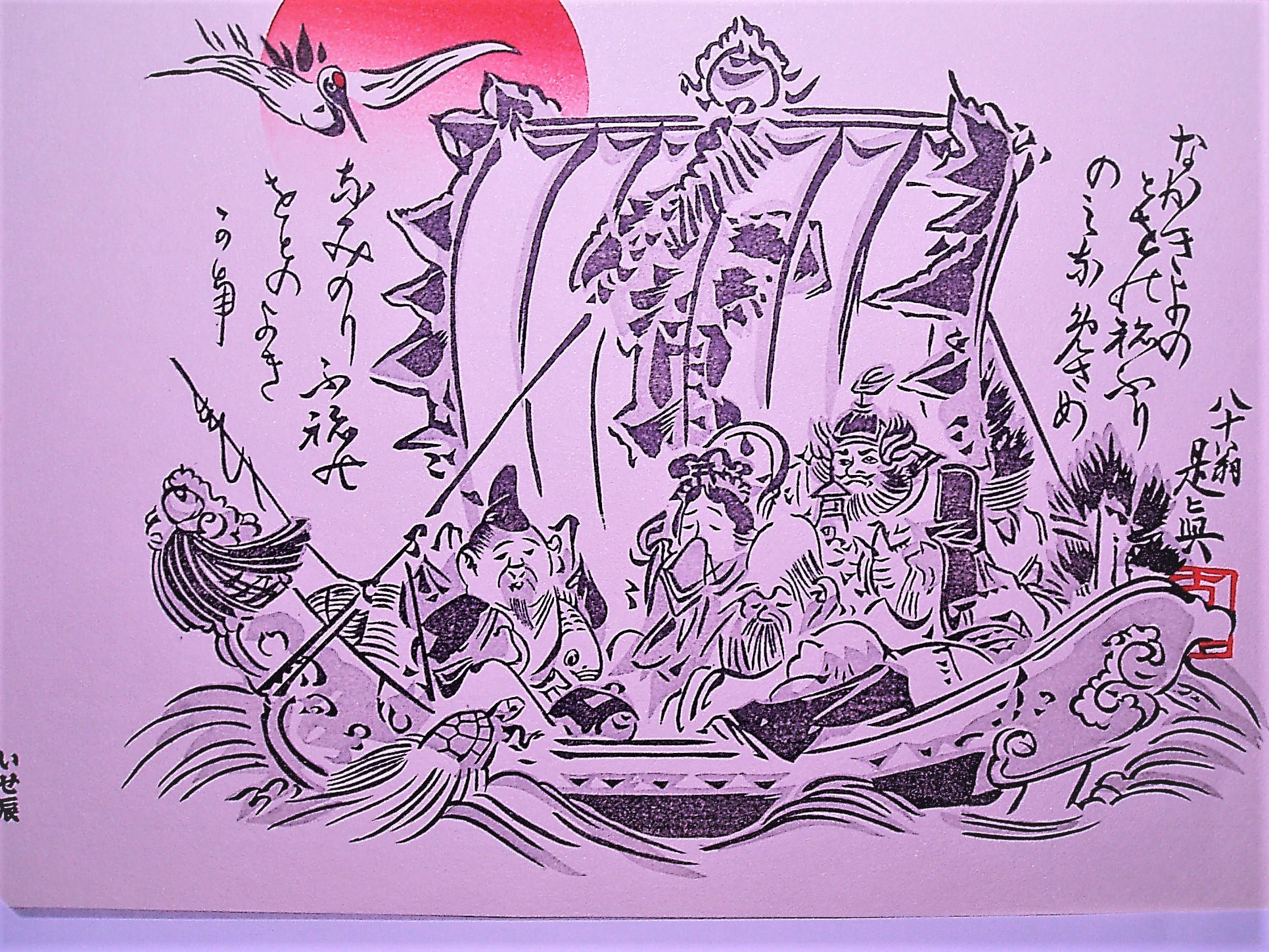
In addition, they are handling fabric drawstring bag, wash cloth handkerchief, purse, napkin and etc. which are all decorated with their designed traditional patterns.
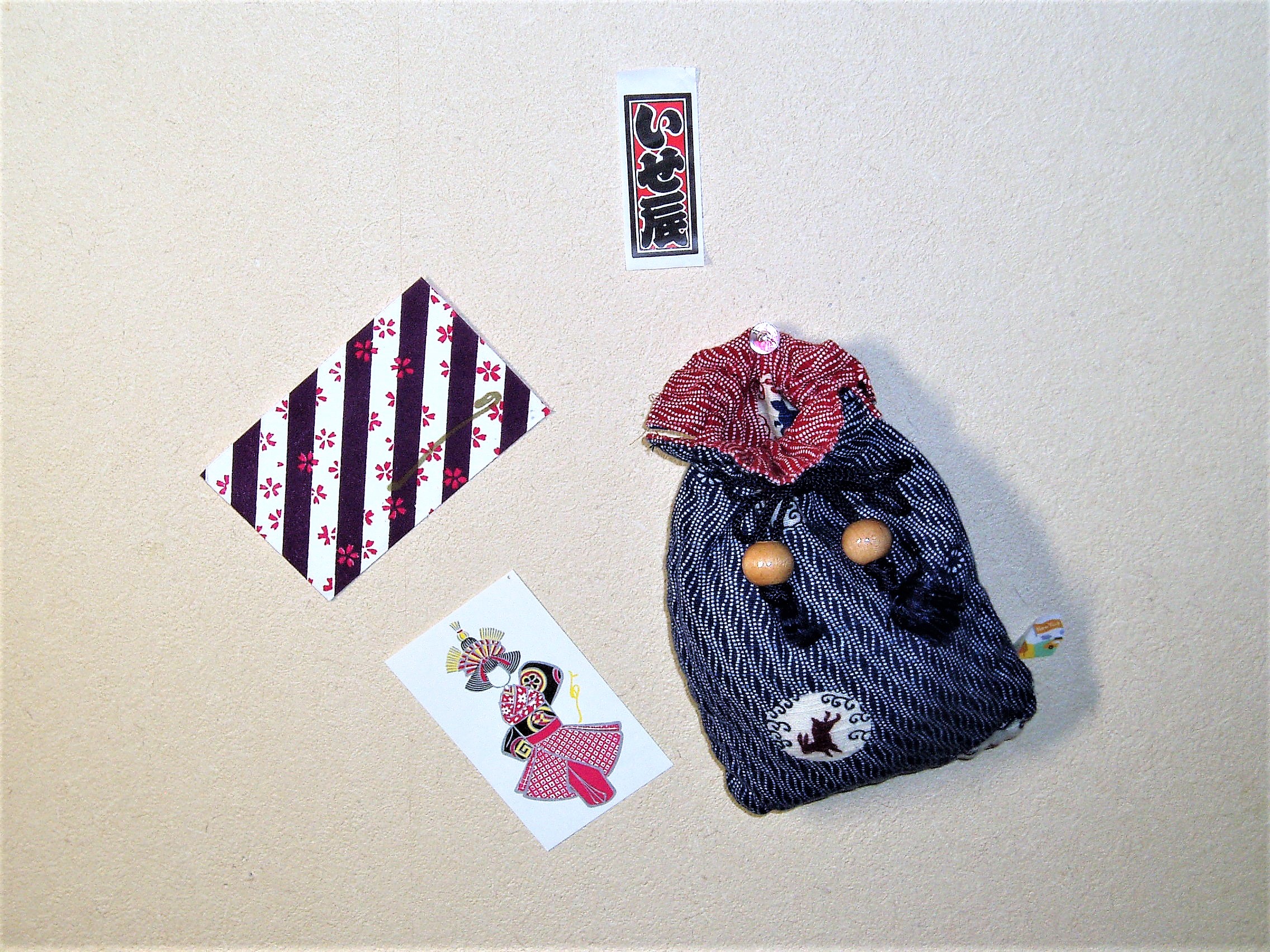
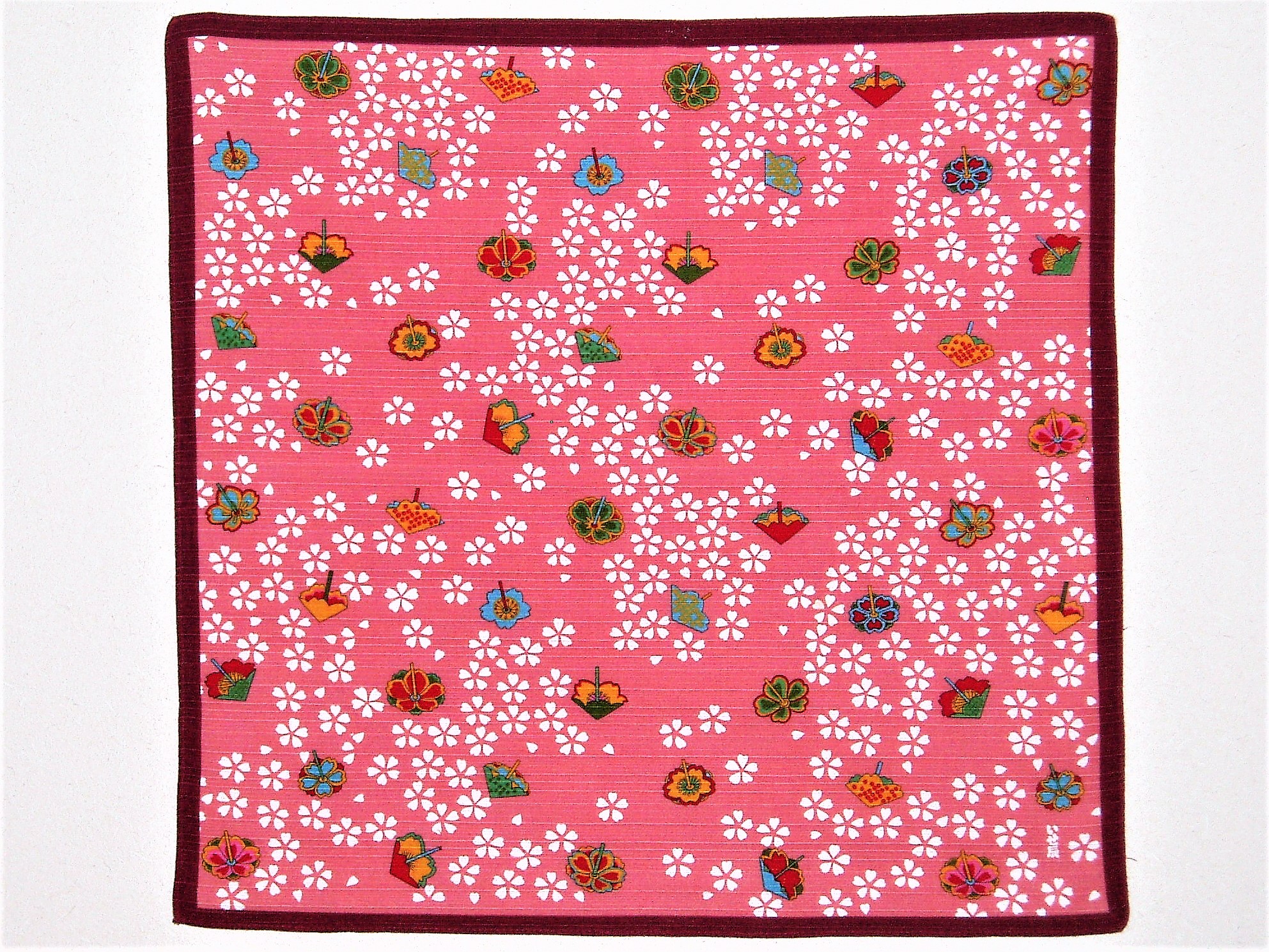
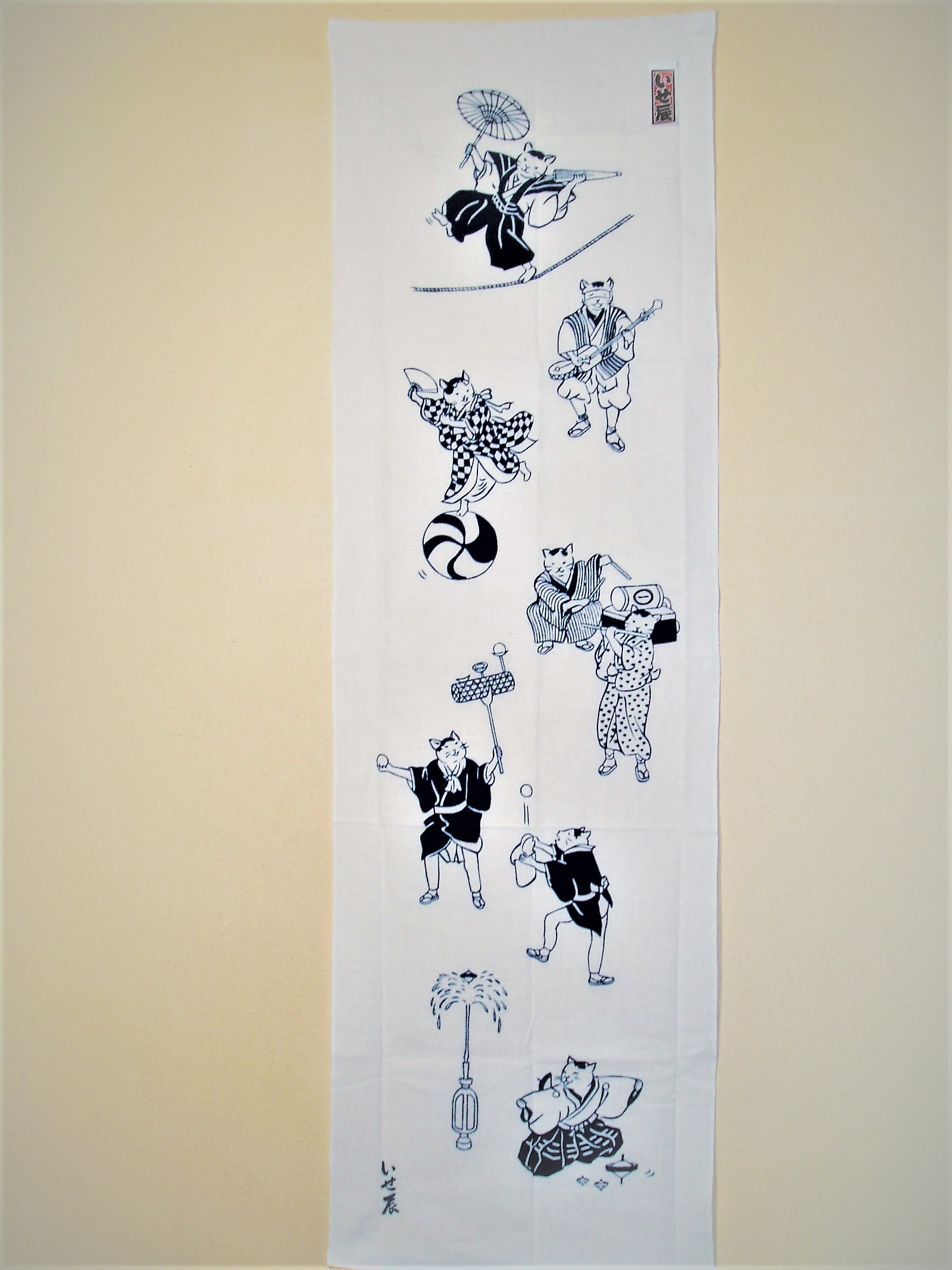
These patterns are showing Japanese classical life style and presenting their aesthetic sensitivity. Their goods might be the best choice for your souvenir from Japan.
Kikujyu-Do Iketatsu
Address: 2-18-9, Yanaka, Titoh-Ku, Tokyo
Tel:03-3823-145
Holiday: Year around
Zenshou-An Temple
Going up a gentle curving slope towards the left about 100 M, we reach the main gate of Zenshou-An Temple on the left side.
Zenshou-An is the relatively new temple which was founded in 1880 by Tesshu Yamaoka, Wasser of Tokugawa Shogunate, to pray for the people who sacrificed themselves for the Meiji Restoration.
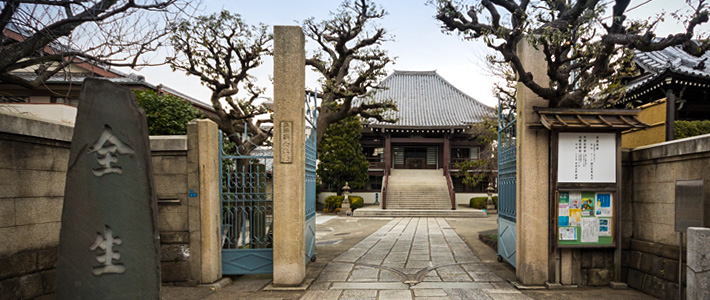

It worships an image of Aoi-Shoukannonn-Bosatsu (Āryāvalokiteśvara)
which was a guardian deity of Edo castle. It is said to be created in the late Heian Period, about 835 ago.
Zenshou-An is servicing a Zen-Meditation, a sermon and a transcription of Sutra for the public periodically. You will be able to join their servicing, if you apply to them. It is reported that the former Prime Minister, Yasuhiro Nakasone and the present Prime Minister, Shinzou Abe would participate in the Zen-Meditation. The temple will suitably give an instruction about how to perform Zen to beginners. There are tombs of Tesshu Yamaoka and of a well-known narrative artist named Sanyutei Encho in the temple ground. And in the cemetery we can also observe a shining golden Kannon statue is standing posture. It shows a remarkable presence which might draw your attention
Sanyu-Tei Encho (The first) was a prominent storyteller who had singular success through the time from the late Edo Period to Meiji. He was skillful at presenting
Ghost (Yurei in Japanese) stories, comical stories and stories about human nature. It is said that his verbal skill was the most outstanding among other masters’ in the field.
He wrote a fine piece of ghost story titling with “Botan-Dourou” (Peony lantern). He described the Simizu valley along Aizome-River as one of scenes of the story.
The “Botan-Dourou” (Peony lantern) is a tragic love story between a warrior named “Shinzaburo” and a beautiful woman named “Otsuyu”.
“Otsuyu” is visiting “Shinzaburo” along with her aged maid holding a peony
lantern every night and then leaving before dawn. In the end of story,
“Shinzaburo” realized that “Otsuyu” is a ghost. Ghost is called “Yurei” in Japanese.
Sanyu-Tei Encho is also famous for a collector of “Yurei (ghost) pictures. All of his collectibles were deposited in Zensho-In Temple after his death. Those are open to the public on August every year. We can appreciate various styles of “Yurei” pictures which were drawn by prominent painters such as Okyo Maruyama, Seiu Itoh, Bunichi Tani, Eiho Hiresaki, Shosai Kawanabe, Kuniyoshi Utagawa and others. They all represented artistic master’s circles in Edo and Meiji period.
A Yurei holding a baby in her arms depicted by Seiu Itoh, is extremely horrible among the exhibited works. If you stare at her eerie facial expression, you might feel a cold flush through your spine.
The Yurei standing by the mosquito net drawn by Eiho Hiresaki presented graceful and attractive appearance.
Okyo Maruyama depicted a Yurei with a refined glamorous figure in his beautiful cursive touch. It would be a picture of a beautiful woman rather than ghost painting
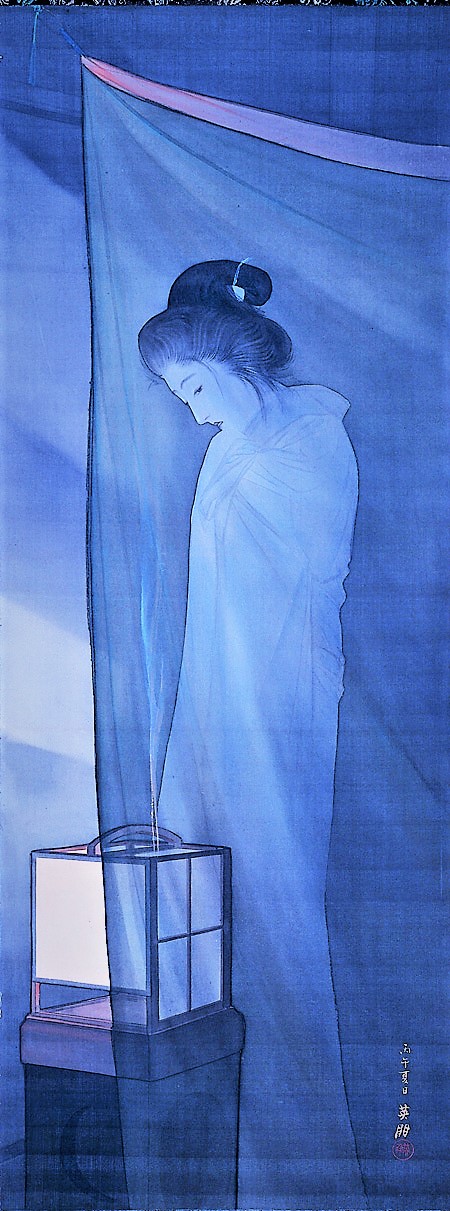


“Yurei” is a soul of the dead who is looking back to this world with a fierce desire for revenge or love or jealousy or sorrow or wrath. It is said that the soul called “Reikon” in Japanese leaves the body after its death and enters the land of the dead, heaven or hell according to Japanese traditional belief which basically
comes from Shintoism and Buddhism. The “Reikon” keeping deep attachment to this world is wondering around Limbo and sometimes appears in faintly visible figure in this world. This is said to be “Yurei” in Japanese folklore. As townsmen culture flourished in Edo period, “Yurei” was taken up as a popular motif of story
telling, painting (Ukiyo-E), novel, Kabuki play and others. “Yurei” cause people to feel not only and ambience of mystery, awe towards afterlife, transience of human life but also artistic beauty in its weird and eerie looking. This might have drawn people’s interest.The painting exhibited in Zenshou-An Temple might let overseas visitors feel Japanese unique subtle aestheticism.
Address: 5-4-7, Yanaka, Taitoh-Ku, Tokyo
Venue: At the gallery in Zenshouin Temple
Exhibition: Painting of “Yurei”
Period: One month from August 1st to August 31st every year
Holidy: monthly around
Admission fee: 500 in Jp Yen per person.
